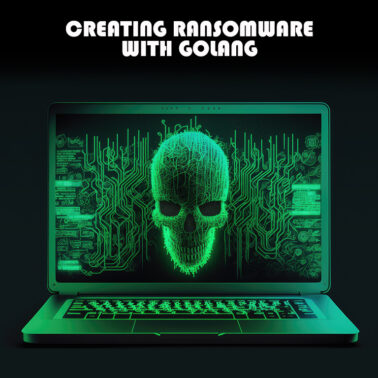PenTest: Pentesting with Python in 2023
$33.00
Subscribe
Description
| File | |
|---|---|
| PT_01:23_PREVIEW.pdf |
Dear PenTest Readers,
In the current edition we would like to focus on Pentesting with Python. Our contributors provided extensive tutorials on hacking web applications with Python-related tools and techniques. You will read about Scapy, VM-exploitation with Python, among others! The other really interesting topic that our authors focus on is obviously the most hyped topic in the industry - ChatGPT!
The first article is a very interesting experiment of an “interview” with Chat GPT on pentesting practice. The second write-up examines the skillfulness of the most famous AI chatbot in offensive security, and highlights the key danger related to that. Both of the articles are highly recommended reading for everyone interested in the topic!
Apart from that, you’ll also read on Secure Access Service Edge in Cybersecurity, the best CI/CD practices, RAT Trojan Access Remote, and more!
Without further ado,
Enjoy your reading!
PenTest Magazine’s Editorial Team
Table of Contents
by Saad Babar
Scapy is a powerful Python-based packet manipulation tool that allows you to dissect, send, and construct network packets. It provides a library of Python classes and functions that you can use to create and operate packets. It also includes a command-line interface that allows you to interact with the tool using simple commands and scripts.
Chatting with RachaelChatGPT about Pentesting
by prof. Volker Skwarek
In this interview, ChatGPT is challenged with the general subject of penetration testing. I wanted to know more about ChatGPT’s knowledge about pentesting and how far it would guide me with precise procedures for testing. Last but not least, I also wanted to know a little more about ChatGPT. The answers were surprisingly good, even if they were not finally satisfying.
Is ChatGPT Useful for Penetration Testing?
by Jason Ross
This highlights one of the key dangers of ChatGPT: you can’t necessarily trust it, because it doesn’t include any indication of how correct (or incorrect) its responses are, and it words its responses in a very compelling and engaging way that is easy to believe in. In these ways, ChatGPT is a fantastic example of what a good social engineering dialog should look like.
by Rausson Gouveia
Hello everyone, I'm here to talk a little bit about a type of tool used in cyber attacks, called the Remote Access RAT Trojan, a tool used by virtually all hackers. But what would a RAT be? A RAT is a malicious program that remotely accesses devices, such as cell phones, computers and systems, used for downloading, uploading files, terminal access, data theft, file encryption, etc. The use of RATs has intensified since the start of the pandemic. With an increasing number of transactions taking place via cell phone, cybercriminals are using malware to intercept security information and commit banking crimes. In 2021, Kaspersky Lab discovered the third family of Brazilian RATs focused on taking possession of smartphones, and claims that the practice is rapidly internationalizing.
The Role of Secure Access Service Edge in Cybersecurity
by Enoch Anbu Arasu
SASE (Secure Access Service Edge) is a comprehensive solution that aims to improve the security of an organization's network by providing centralized and cloud-based security services. This solution streamlines access to resources and enhances the security of the network edge. SASE is important because it helps organizations cope with the challenges posed by the increasing complexity of a cloud-forward system that relies on a distributed workforce and SaaS services. The future of cloud security lies in SASE, which promises to provide organizations with a comprehensive and secure solution to manage their network security needs.
ESXi - VM Exploited with Python
by Andrea Cavallini
During 2021, an attack based on Python with ransomware as a vector was successfully performed. Sophos analysts discovered this attack and found a lot of misconfigurations on a compromised system that allowed the breach, such as a team viewer on administrator client without TFA and the ESXi shell enabled: the attackers took advantage of this series of causes accessing hypervisor and carrying out the attack, encrypting the disks and the volumes and stealing data. When malware gets executed, the ransomware generates a unique key pair that will be used for encrypting files during the current execution: the key pair changes at every run and it's one for every single datastore, making it difficult to restore the system but even the understanding of the attack.
“Let me tell you one secret - nothing can be 100% secure”
an interview with Dinesh Sharma
I am more of a manual person. I do use automated scanners and exploitation frameworks but I prefer to do it manually so that I can have more control over the command output. It depends on the project, basically; suppose I am doing an app pentest, then Burp Suite is my favorite tool. If we can combine this with the extensions it provides, then it is more killer than an AK-47. For directory brute-forcing, there are multiple tools available, like amass and dirbuster, but I have written my own Python script that can do this task for me with multithreading and with desired output format.
Top 6 CI/CD Security Best Practices to Follow
by Mehul Rajput
CI/CD falls under the category of DevOps, which is formed by amalgamating both practices of continuous integration and continuous delivery. The main purpose of continuous integration and continuous delivery, i.e., CI/CD, is to automate almost all the human intervention that is being performed manually, which was a prerequisite to opt for new code. But now, with CI/CD pipeline, developers have the luxury of making changes into the code that can be directly automated, tested, and pushed out for delivery and deployment. CI/CD helps you minimize the downtime and helps you release the code quicker. Here we will learn top CI/CD security best practices to get the job done in an easier way without the encumbrance of doing manual work.
WiFi Hacking with Airgeddon on Kali Linux
by Anastasis Vasileiadis
Airgeddon is a popular, free, and open-source wireless security auditing tool that helps penetration testers locate and exploit vulnerabilities in wireless networks. It is available for download from GitHub. Airgeddon runs on Kali Linux and other Debian-based distributions.
Only logged in customers who have purchased this product may leave a review.















Reviews
There are no reviews yet.